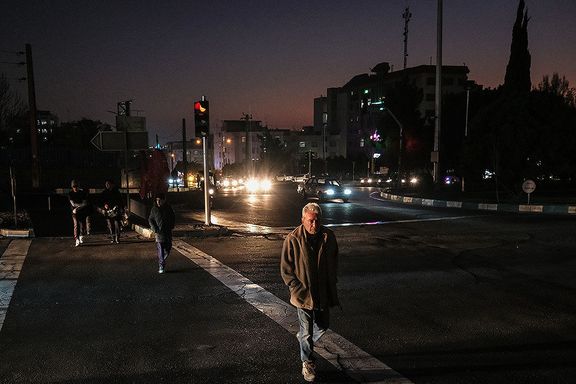Iran's energy exports rise as domestic grid falters

Despite worsening energy shortages at home, Iran has increased its gas and electricity exports over the past year, official data shows.

Despite worsening energy shortages at home, Iran has increased its gas and electricity exports over the past year, official data shows.
The country has faced persistent shortfalls in both electricity and natural gas since early 2024. Many industries have been affected and may even come to halt, Iranian minister for industry Mohammad Atabak warned on Thursday.
Still, Iran’s gas exports to Turkey went up 5% in the year ending February 2025, according to latest data from Turkey’s Energy Market Regulatory Authority (EPDK).
Electricity exports to Iraq rose by 6% in the same period, according to a recent report by Iran’s energy ministry. Iraq is also Iran’s second-largest gas customer, but no updated figures are available for gas exports to that country.
Profiting abroad, struggling at home
In its latest budget, the moderate administration of president Masoud Pezeshkian projects gas exports worth $5 billion.
Iran’s gas exports are dwarfed by domestic consumption. But the export revenues far exceed the domestic sales due to heavy subsidies of energy for Iranians.
The same pricing gap exists in the electricity sector. The government is struggling to fuel Iran’s power plants, but continues to sell electricity to higher-paying foreign buyers while industries at home face frequent power cuts.
A manager at a petrochemical plant in Tabriz, northwestern Iran, told Iran International that the factory loses power three days a week, with water cuts one day weekly.
“Running diesel generators isn’t viable either,” he said, “Industrial diesel now sells for 15,000 tomans a liter—about 50 times the subsidized rate for vehicles.”
Diesel prices set to rise
Iran’s government recently approved a three-tier pricing plan for vehicle diesel: a subsidized quota, a semi-subsidized tier, and a market-based rate aligned with production costs.
The current subsidized price is just 0.35 cents per liter. While final figures haven’t been released, the oil ministry estimates that diesel production costs run around 285,000 rials per liter—roughly 34 cents.
An oil ministry document obtained by Iran International shows diesel production grew by 3.5% last year, while consumption jumped 7.5%. Officials have filled the gap through fuel oil barter deals abroad.
Roughly half of Iran’s diesel goes to the transport sector; the rest fuels power plants, industry, and other infrastructure.
Industries told to import electricity
Curiously, officials in Tehran are now encouraging factories to import electricity.
“Large industrial users can import power from Turkey and Azerbaijan via existing cross-border grids,” deputy director of transmission at state utility Mohammad-Allah Daad said on Tuesday.
But with domestic electricity priced far below international levels, this solution appears economically unfeasible for most industries. Rising energy costs are expected to push factory prices even higher—further fueling inflation.
A decade ago, Turkey and Azerbaijan imported electricity from Iran. Today, both countries have become net exporters thanks to rapid investment in solar and wind energy.
Imports may not be a solution
An investigation by Iran International found that Iran’s infrastructure allows for importing just 850 megawatts (MW) from neighboring countries. Yet the country faces a seasonal shortfall of up to 25,000 MW in summer and 15,000 MW in winter.
Even using the full import capacity would cover barely 3.4% of the summer gap.
To illustrate the scale of the problem: if Turkmenistan, Azerbaijan, and Armenia diverted all their current exports—roughly 3 terawatt-hours annually—to Iran, it still wouldn’t be enough to meaningfully offset the deficit.
Natural gas poses an even bigger challenge.
Over the past three years, Iran’s electricity and gas output have grown by just 2% annually—while consumption has surged more than threefold, driven by population growth, subsidies, and inefficiency.